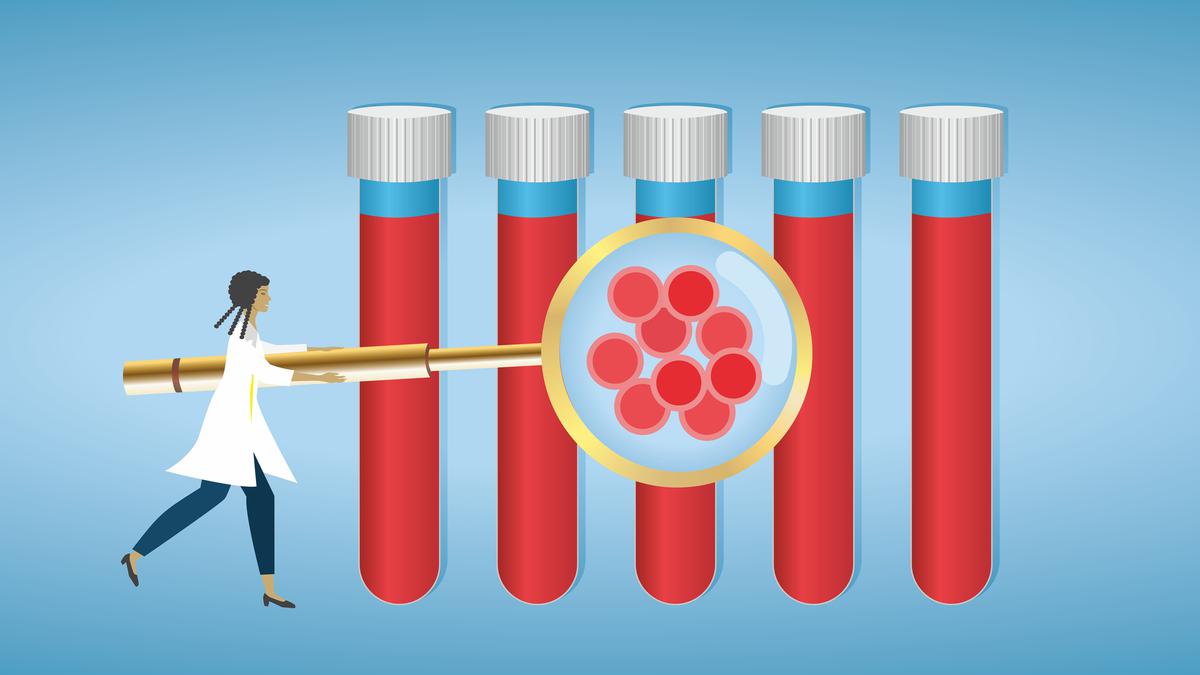- Recent discussions in India have been on anaemia, with debates centred on the measurement and control of haemoglobin levels.
- The WOMAN-2 trial collaborators released a study in The Lancet highlighting the role of anaemia in postpartum haemorrhage and urging India to make educated policy decisions.
- Anaemia affects a large number of women worldwide and is connected with a high death risk in situations of postpartum haemorrhage.

What exactly is anaemia?
- Anaemia is a medical disorder characterised by a decrease in the number of red blood cells or a lack of haemoglobin, the protein that transports oxygen throughout the body.
- This disorder can impair the blood’s ability to carry oxygen to tissues and organs.
- Anaemia symptoms might vary based on the underlying cause and severity of the disorder.
However, some common anaemia symptoms include:
- Fatigue and weakness: A frequent sign of anaemia is fatigue and a lack of energy. This happens because the tissues and organs of the body do not receive adequate oxygen.
- Shortness of breath: Because the blood’s oxygen-carrying capacity is diminished, people with Anaemia may have trouble breathing, especially during physical exercise or effort.
- Rapid or irregular heartbeat: The heart may beat rapidly or erratically in an attempt to compensate for a lack of oxygen. This symptom is more obvious during physical activity or when the person is at rest.
- Dizziness and lightheadedness: Anaemia can reduce blood supply to the brain, resulting in dizziness and lightheadedness.
- Cold hands and feet: A decrease in blood flow can cause a sensation of coldness in the extremities, particularly the hands and feet.
- Headaches: Some people with anaemia may have regular headaches as a result of a diminished oxygen flow to the brain.
What is the relationship between anaemia and maternal risks?
- Complication risk: Anaemia during pregnancy increases the risk of premature birth, low birth weight, and maternal mortality.
- Anaemia can produce tiredness, making it difficult for pregnant women to meet physical demands.
- Preeclampsia: Anaemia has been related to an increased risk of developing preeclampsia, a hazardous illness.
- Postpartum haemorrhage: Anaemia raises the risk of postpartum haemorrhage.
- Impaired immunological function: Because anaemia impairs the immune system, pregnant women are more vulnerable to infections.
- A deficit in iron Anaemia is common during pregnancy and can have a detrimental influence on both mother and foetal health.
The Relationship Between Anaemia and Postpartum Haemorrhage
- The global anaemia burden is as follows: Anaemia affects almost half a billion women of reproductive age globally.
- Anaemia increases the risk of postpartum haemorrhage, a common cause of maternal death, especially in low- and middle-income countries.
- WOMAN-2 test: The study looked at the relationship between prenatal haemoglobin levels and the risk of postpartum haemorrhage in women from Pakistan, Nigeria, Tanzania, and Zambia.
The WOMAN-2 Trial Results
- Relationship that is ongoing: Lower haemoglobin levels were linked to more blood loss and clinical postpartum haemorrhage.
- Influence on maternal function: Women with anaemia have lower oxygen-carrying ability, which can result in shock even with small blood loss volumes.
- Anaemia severity: Severe anaemia was related with a greater risk of death or near-miss occurrences than moderate anaemia.
Recommendations and Preventive Measures
- Preventive treatment: Preventing and treating anaemia in women of reproductive age should be prioritised.
- Existing initiatives: To combat anaemia, the Indian government gives iron and folic acid supplements, particularly to adolescent females.
- Challenges and mission-mode strategy: Rising levels of anaemia in India necessitate a more aggressive public health approach to tackle the problem.
- Cultural and social considerations: For accurate haemoglobin testing, public health programmes should incorporate cultural attitudes and preferences around blood draws.
- Considerations for outreach programmes: A thorough grasp of cultural and social realities is critical to the effectiveness of anaemia prevention campaigns.
@the end
The WOMAN-2 trial emphasizes the importance of anaemia in postpartum hemorrhage, urging India’s policymakers to use evidence-based guidelines, focus on prevention, treatment, and community engagement.
Source: https://www.thehindu.com/sci-tech/health/the-irrevocable-connection-between-anaemia-and-maternal-health/article67042237.ece#:~:text=Anaemia%20has%20a%20very%20strong,of%20reproductive%20age%20are%20anaemic.
